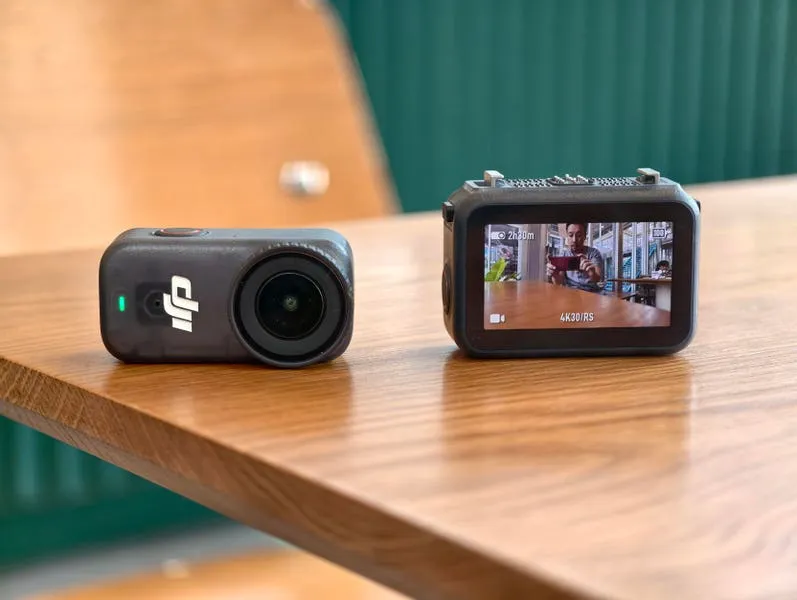Forbes contributors publish independent expert analyses and insights.
The battle between DJI and Insta360 is heating up. The two Shenzhen-headquartered companies used to dominate a respective niche: DJI with drones, and Insta360 with 360-degree cameras. But increasingly, the two are branching out and entering each other's territory. The past few months have seen DJI launch a 360 camera and Insta360 introduced a drone, and now DJI is jumping into the modular small action camera space that was practically invented by Insta360 five years ago.
The DJI Osmo Nano is a small two-piece camera. The camera part with the lens can detach from the "body" with the screen, and stick magnetically to various metal surfaces, allowing the small camera to be mounted in unusual spots. Even when detached, the part with the screen can still see exactly what the camera is filming, essentially becoming a remote control.
This is the exact same idea behind Insta360's Go series, whose latest model, Go Ultra, I just tested a month ago. The specs are similar too: both the DJI Nano and Insta360 Go Ultra feature a 1/1.3-inch camera, which is huge for a small camera.
The Nano camera, when detached, weighs 53g, and can shoot videos for 90 minutes on a single charge. The body is an addition 73g, making for a total weight of 126g, still light enough that you can shove in your pants pocket or small purse and not feel the camera much.
The DJI Osmo Nano and Insta360 Go Ultra are very similar in performance, but each one does have respective strengths. While both cameras will mostly be used to shoot 4K videos at 30 or 60fps, the Go Ultra can bump up to 120fps if the user downgrades resolution to 2.7K. DJI cannot do this.
But on the other hand, DJI's Nano can shoot 10-bit LOG footage, whereas the Go Ultra cannot. Both cameras can connect to Bluetooth wireless microphones, and each company has its own mics, but DJI's microphones have been around longer and much more widely used. It is not an exaggeration to say over 90% of my tech reviewing YouTuber friends all use DJI microphones. So the DJI Osmo Nano has an advantage in that it plays nicer with a much more mainstream microphone than Insta360.
However, you may not even need a bluetooth microphone most of the time, as both cameras have really good built-in mics. I would say, in a very loud city like Hong Kong, these mics alone would not be enough. But in quieter cities like Chiang Mai, Osaka, Berlin, the built-in mics are good enough for video capture.
As mentioned, the main selling point of these detachable small cameras is that the camera is so small, it can be placed in unusual spots. The magnetic back certainly helps.
The above picture shows both cameras attached magnetically to a street lamp in Hong Kong. This allows me to quickly set up a shot to film outside without the need for a tripod. At the gym, I have been attaching the Osmo Nano to various gym equipment to film videos at unusual angles.
Footage captured looks good, with vivid colors and excellent stabilization. You can see the embedded video above for lots of samples.
Overall, the DJI Osmo Nano is tremendous for a first-generation camera; it is almost every bit as good as Insta360's awesome Go Ultra, with perhaps even more capabilities.
The DJI Osmo Nano is priced at $440; it will be sold just about worldwide except the U.S.
